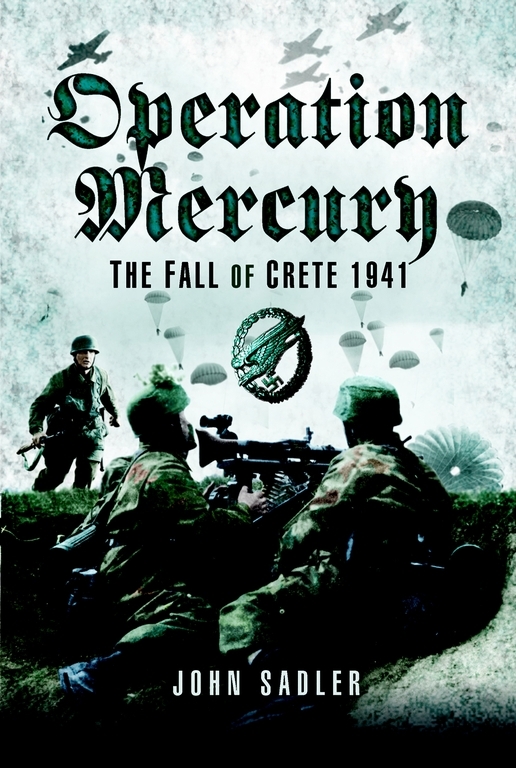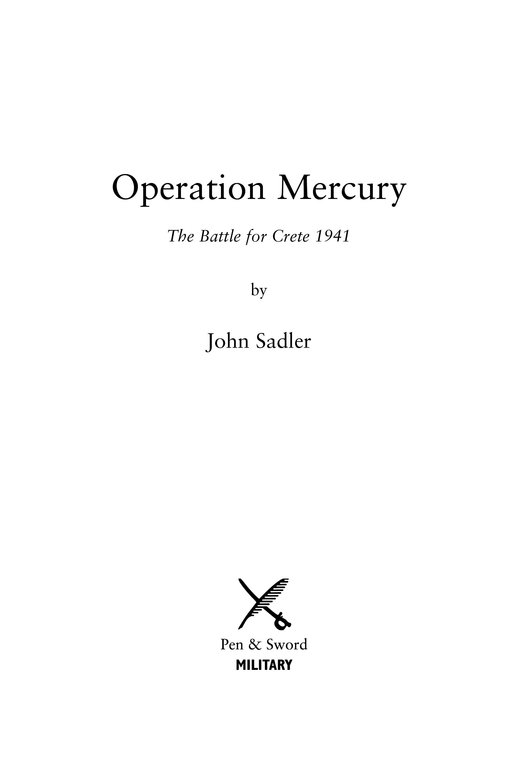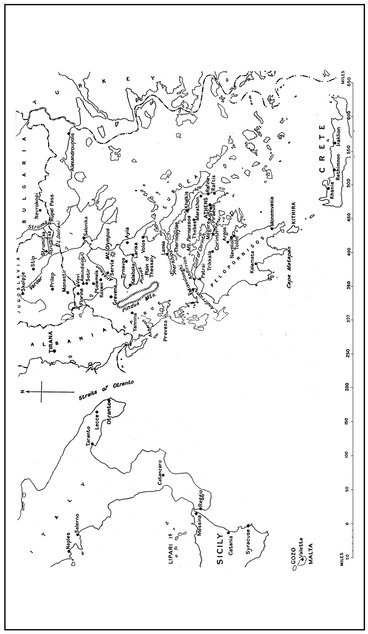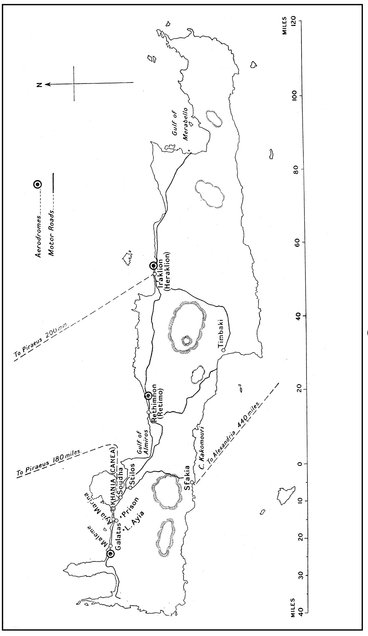Operation Mercury
Authors: John Sadler


Operation Mercury
Â
Revised Proofs with Index
Date: 14 March 2007

First published in Great Britain in 2007 by
Pen & Sword Military
an imprint of
Pen & Sword Books Ltd
47 Church Street
Barnsley
South Yorkshire
S70 2AS
Â
Copyright © John Sadler, 2007
9781783460533
Â
Â
The right of John Sadler to be identified as Author of this Work has been asserted by him in accordance with the Copyright, Designs and Patents Act 1988.
Â
A CIP catalogue record for this book is
available from the British Library.
Â
Â
All rights reserved. No part of this book may be reproduced or transmitted in any form or by any means, electronic or mechanical including photocopying, recording or by any information storage and retrieval system, without permission from the Publisher in writing.
Â
Typeset in Sabon 10/12 by
Lamorna Publishing Services
Â
Printed and bound in England by CPI UK
Â
Pen & Sword Books Ltd incorporates the Imprints of Pen & Sword Aviation, Pen & Sword Maritime, Wharncliffe Local History, Pen & Sword Select, Pen & Sword Military Classics and Leo Cooper
Â
For a complete list of Pen & Sword titles please contact
PEN & SWORD BOOKS LIMITED
47 Church Street, Barnsley, South Yorkshire, S70 2AS, England
E-mail: [email protected]
Website:
www.pen-and-sword.co.uk
Dedication
Â
Â
This book is dedicated to the memory of Alexander Bruce Cowper, 2077985 Royal Engineers, killed in action 28 May 1941 during the Battle for Crete and whilst serving with Layforce. Like so many others he has no known grave.
The young hate the old
Yet stumble after them.
Stand for New Zealand!
Yelled Kippenberger,
Country lawyer turned Brigade Commander
And conveyed ten thousand miles
To practise heroics
On a deadly Cretan hillside.
Stand for New Zealand!â¦
Over the fraudulent field of death
Forward for New Zealand!
You random assembly of farm labourers,
Clerks, rouseabouts, shearers, barmen,
Salesmen, commercial travellers, storemen,
Mechanics, musterers, drivers, factory hands,
And seasonal workers pressed into temporary khakiâ¦
We are infantry of mettle
Reputed for steadfastness in the attack,
The highest produce of a country that
Breeds men with the animal virtue of blind courage
In the willing service of the herd.
Our lifestyle and instincts instruct us
More cogently than any military precepts.
Forward for New Zealand!
Quoted by Tony Simpson in
Operation Mercury
pp254-5.
Copyright Page
Dedication
Acknowledgements
A note on spelling
Chapter 1
-
A Parallel War
Chapter 2
-
A New Thermopylae
Chapter 3
-
Operation Mercury
Chapter 4
-
Fallen Flower Petals â Maleme, Chania and Rethymnon 20 May
Chapter 5
-
Stones and Sheath Knives â the Crisis 20/21 May
Chapter 6
-
The AA Waltz â Battle at Sea
Chapter 7
-
Bombed from the Earth â the Turning Point
Chapter 8
-
One Large Stench
Chapter 9
-
The Navy Must Carry On â Evacuation 28/31 May
Chapter 10
-
Glad to have seen the day â Occupation and Liberation 1941-1945
Chapter 11
-
Remembrance
Notes
Appendix 1
-
Order of Battle
Appendix 2
-
Ten Commandments of the Parachutist
Appendix 3
-
The Intelligence War
Appendix 4
-
The King of the Hellenes
Bibliography
Index
The author wishes to acknowledge the assistance of the Durham Light Infantry Museum in Durham; The County Durham Records Office; The North East Military Vehicle Museum; the members of The Northern World War Two Association; the Imperial War Museum; the staff of the Naval Museum in Chania and George Andreas Hatzidakis of the War Museum, Askifou; Steve Shannon at the DLI Museum; David Fletcher of the Tank Museum Bovington; Roberta Twinn of the Discovery Museum Tyneside; Sara Bevan of the Imperial War Museum; Rod Mackenzie of the Argyll and Sutherland Highlanders; Thomas B. Smyth of the Black Watch; Paul Evans of the Royal Artillery Museum and Anna Tiaki of the Alexander Turnbull Library, New Zealand. Thanks are also due to my sister-in-law Mary Towns for providing the âfamily' connection; to the late Nigel Porter; Timothy Norton; Kit Pumphrey, Sir Lawrence Pumphrey and Fred Mason for advice and assistance regarding the role of the Northumberland Hussars and for providing access to unpublished papers and, as always, to my wife, Ruth, who bravely endured a rather hair-raising drive down the spectacular switchbacks of the Imbros Gorge. All errors are, of course, entirely the responsibility of the author.
Â
John Sadler.
Â
Northumberland, 2006.
Let me forget â let me forget,
I am weary of remembrance,
And my brow is ever wet,
With the tears of my remembrance,
With the tears and bloody sweat,
Let me forget.
Â
If ye forget â if ye forget,
Then your children must remember,
And their brow be ever wet,
With the tears of their remembrance,
With the tears and bloody sweat.
Â
If ye Forget
by G.A. Studdert-Kennedy
Students of the Battle for Crete could be excused for a degree of mounting frustration over the common spelling of place names which differs rather widely from account to account. Thus Chania can appear as Hania or Canea, Heraklion as Iraklion, Herakleion or Iraklio and so on. The difficulty lies in the fact that there is no generally recognised system for transcription of modern Greek to English. Greek publications themselves exhibit inconsistencies. I have therefore opted to follow Baedeker and retain the accepted orthography of classical place names.

Greece and the Eastern Mediterranean

Crete
A Parallel War
When a Campaign ends in disappointment or in disaster, every pundit at once asks why it was ever started. But history often records that a failure is as glorious and, in the long view, as useful as a victory.
1
Bone weary, part demoralised, hungry and thirsty, the survivors of the Crete garrison surveyed the steep, seemingly unending climb from the stifling heat of the coastal plain to the rim of the Askifou plateau in the final days of May 1941. They could be forgiven if they failed to share the official historian's bent for propaganda. These exhausted and beaten men would be unlikely to have perceived anything vaguely useful in their defeat. Major General F.F.C. Graham of the Commandos painted a substantially less edifying view:
The road was jammed with troops in no formed bodies shambling along in desperate haste. Dirty, weary and hungry, they were a conglomeration of Australians, a few New Zealanders and British, and Greek refugees. They had only one thing in common and that was a desire to get as far as possible from Canea â a rabble one could call them, nothing else ⦠desperately we pushed our way on to the road and tried to push past the motley throng which straggled over it. All day the sky was thick with enemy aircraft, in many cases flying at only a few hundred feet and every now and again coming down to bomb and machine gun the troops trudging along the road. All day the stream of the retreat flowed steadily but wearily on. When enemy aircraft approached, the bulk of the men tried to scatter off the road or hid in the ditches; some, impervious to threats such as: âLie down you bastard or I'll fucking shoot you,' bore steadily on. [We] lay with the sun on our backs straining our eyes to catch the first sign of enemy movement to the north or in the mountains to the west.
2
Now there is a well metalled road from Souda through Vrysses leading up to the plateau through a series of hairpin bends; the land stretches away, desolate in summer, sparse grass and scrub, strewn with rocky outcrops and loose scree. The sun is a demon, a few scattered goats cling to the hillside, their bells the only melody in the thyme scented air. There is virtually no water and the ascent is steep and exposed in brilliant light; an air gunner's dream.
The Askifou Plateau is a bare bowl surrounded by barren slopes, leading to the greater heights of the Lefka Ori, the White Mountains, that crown the island's backbone. The stump of an ancient Crusader castle stands astride a fat knoll to the east, silent witness to a long history of occupation.
Once across the plateau the ground disappears into the sudden drop of the Imbros Gorge, a primeval landscape of plunging hillsides. The modern road embarks on the dizzying and seemingly interminable series of hairpins leading down to the narrow coastal plain 2,500 feet below. It looks much further, the scattered habitations like white dots on an ochre, chequered board, the descent laborious.
This is the edge of Europe, the southern rim; south across the hazed blue waters lies Egypt, another continent, 200 miles distant. Sphakia, now a compact jumble of holiday lets and apartments, crowding a narrow harbour bedecked with the froth of mass tourism, clings to the hillside.
It was here that the survivors waited in their thousands, their nightmare route over the pass littered with the detritus of defeat, abandoned rifles, packs, uniform and ruined vehicles. Their only hope lay in the Navy, the pursuing Germans continually and determinedly held off by a dogged rearguard. For many, this was their second such debacle, the first the expeditionary force's flight from mainland Greece in April.
Yet, only a few days previously, General Bernard Freyberg the C.-in-C. had sent a highly confident cable to GHQ Middle East:
Have completed plan for defence of Crete and have just returned from final tour of the defences. I feel greatly encouraged by my visit. Everywhere all ranks are fit and morale is high ⦠I do not wish to be overconfident but I feel that we will at least give excellent account of ourselves. With help of Royal Navy I trust Crete will be held.
3
Crete was not held, the island was lost, the second such catastrophe to afflict British forces that disastrous spring of 1941. The fall of Crete was the final act in a two act tragedy of British involvement in the Balkans.
Greece is what everybody knows, even in absentia, even as a child or as an idiot or as a not-yet-born. It is what you expect the earth to look like given a fair chance. It is the subliminal threshold of innocence. It stands, as it stood from birth, naked and fully revealed. It is not mysterious or impenetrable, not awesome, not defiant, not pretentious. It is made of earth, fire and water. It changes seasonally with harmonious, undulating rhythms. It breathes, it beckons, it answers.
Crete is something else, Crete is a cradle, an instrument, a vibrating test tube in which a volcanic experiment has been performed. Crete can hush the mind, still the bubble of thought.
4
Crete is the biggest of the Greek islands after Cyprus, the fifth largest in the whole of the Mediterranean Sea. It lies west to east in the Southern Aegean, 160 miles (260 km.) in length but with a narrow girth of between 7.5 and 37 miles (12 to 60 km.). Some 63 miles (100 km.) south-east of the Peloponnese it forms the central link in a chain of islands spanning the watery gap between mainland Greece and Turkey.
Geologically, its position is a perilous one, the shelf of the Aegean plate is a zone of considerable geological tension and this has produced a series of devastating earthquakes which have blighted the island's history, the most recent being a quake which registered 6.1 on the Richter scale in 1994. Happily there was no loss of life or major structural damage but an earlier tremor in 1926 caused widespread devastation.
Such a volatile geological heritage has produced the three main mountain ranges that form the stiff backbone of the island, split in places by dramatic gorges such as appear at Imbros and Samaria. To the west the sweeping heights of the Lefka Ori rise dramatically to a majestic height (8,045 ft./2452 m.). Mount Ida in the centre forms the highest peak at 8,058 ft./2456 m. Further east the Dikti range surrounds the high plain of the Lassithi Plateau â birthplace of Zeus and indeed such an elemental landscape is a fitting home for the ancient Gods.
Above Sitia on the tip of the east coast, the Thriptis hills rise to 4,843 ft./1476 m. The limestone formations are honeycombed with caves, sculpted with stunning stalactite formations. In summer the network of twisting valleys and rivulets run dry; only in winter or during a wet spring do the watercourses fill up. Spring tends to come quite early, certainly by April, and the hot blaze of the southern Mediterranean summer persists usually until late September or October, with scant rainfall between.
The long south coast is a romantic wilderness with the high cliffs sweeping sheer to the shore leaving, at best, only a narrow coastal margin. The northern flank is more populous and here lie the harbours of Chania, Rethymnon and Heraklion â it is here that successive waves of migrants, settlers, refugees and invaders have left their mark.
Crete has a very long and dramatic history; in the Bronze Age the Minoan rulers created a unique palace culture, their unwalled cities inviolate behind the might of their swift oared galleys. Earthquakes and the violent eruption of ancient Thera (Santorini) may have contributed to the collapse of the Minoan civilisation and its absorption in the wider Mycenaean culture. Idomeneus, the prince of Crete, is said to have led a commanded body of elite archers to assist the Greeks at the siege of Troy.
The island languished during the relative dark age before the dawn of the classical era; it later came within the hegemony firstly of Rome and, latterly, Byzantium. In the years 826/827 it fell to the Arabs before being recovered, in 961, by the Eastern Empire. The shock of the rapacious Fourth Crusade in 1204 left the island in the sway of the Venetians and they stayed for some 450 years. Though much resented, their monuments abound and their influence still haunts the cities and ports of the north coast.
Islanders and occupiers made common cause against the swelling might of the Ottoman Turks. To no avail, however, for, by 1669, their conquest was complete and Crete remained firmly under the Muslim yoke until 1898. Once the mainland of Greece obtained its independence, after a long and savage struggle, the Cretans frequently rebelled. These were murderous affairs of guerrilla ambushes and merciless reprisal, the forge in which the fierce independence and uncompromising honour of the mountain men was hardened.
The Cretans were no amateurs at resistance, nor were they a civilian population to be cowed by the conqueror's military might â a phenomenon that would astound and enrage the Germans, used to an effortless dominance over defeated peoples. Loyal to family and kin, imbued with the tribal virtues of hardiness, hospitality to strangers and general contempt for centralised authority, deeply devout and fiercely independent, adept at the pernicious ritual of the blood feud, they made remarkable allies and implacable foes.
These Palikari cut a dramatic dash, clad in the mountain shepherd's uniform of black, knee length leather jackboots, baggy woollen breeches, embroidered dark waistcoat, full sleeved shirts, wound headscarves and a long bladed, bone handled yataghan dagger thrust into a coloured sash.
Crete is in truth a continent on its own and should be seen as such by visitors
Crete, the oldest Europe, has its youngest people, bursting with vitality and originality, as insatiable in its thirst for life as it is unhesitating in squandering itself. So many sediments of history weight down on Crete and yet it shows no weariness, no trace of exhaustion: an air of wisdom â such wisdom that it can commit every kind of folly.
5
In 1898 an alliance of the European powers forced Turkey to cede a measure of independence, though retaining sovereignty, with Prince George of Greece being appointed as a form of high commissioner. The islanders liked neither prince nor compromise and, eight years later, the patriot politician Eleftherios Kyriakis Venizelos led a popular uprising whose objective was to force a full union with Greece. Although he became national premier in 1910, full integration was delayed until 30 May 1913.
Venizelos, virulently anti Turk, led his country in the successful prosecution of the Balkan Wars of 1912-1913. During the Great War he leaned toward the Allied cause, mainly in the hope of securing a greater slice of the Ottoman carcass. Conversely, King Constantine I sought, unsuccessfully, to retain full neutrality, his sympathies lying more toward Germany.
The British were not impressed and casually occupied firstly Lemnos as a base for Gallipoli and, latterly with France, the great, malarial sprawl of the encampment at Salonika, from where, ostensibly, it was proposed to assist the Serbs against Austria.
Temporarily ousted, Venizelos riposted with typical vigour and forced the King's abdication, thereafter placing Greece firmly in the Allied camp.
Earlier gains were squandered in the disastrous wars of 1920-1923; the Young Turks responded vigorously to fresh aggression and Greece lost not only her outposts in Asia Minor but also the islands of Imbros and Tenedos. A great rush of refugees, driven out by the Turks, flooded into Crete whilst the indigenous Muslims fled, abandoning their final toehold and leaving only echoes of their architecture in shuttered balconies and the odd crumbling minaret.
Greece became a republic in 1924, a state which appealed to most Cretans, distrustful of monarchies and rather contemptuous of their mainland cousins. Venizelos led a liberal administration until the uncertainties of the economic slump produced a swing to the right. The monarchy was restored and, after a final term in office, the ageing lion was ousted by the hardline General Metaxas, dying in exile in Paris in 1936.
The new premier, whilst an ardent nationalist, saw no need to retain the democratically elected assembly, preferring the sinister autocracy of the police state, with the King as a compliant figurehead. This repressive regime was stoutly resisted by the independently minded Cretans, to whom the paramilitary gendarmerie became a symbol of oppression. Attempts were made to disarm the islanders and the lingering suspicion would bear bitter fruit when Cretans were starved of arms by a regime that feared to arm its own people.
In 1940 the island was still something of a backwater, good roads were virtually non-existent, only the single ribbon of the coastal highway linked the towns along the north coast. The economy remained substantially agrarian, peasant farmers working the olive groves that covered 41 per cent of the cultivable acres, and producing 120,000 tons of oil per annum. The remainder of the useful land was given over to grazing for sheep, goats, pigs and poultry.
Politically, Crete was divided into the four administrative sectors (ânomos'/ânomi') of Chania, Rethymnon, Heraklion and Lassithi (Ayios Nikolaos). Chania, the second largest of the towns after Heraklion, and birthplace of Venizelos, was the traditional, Venetian capital. The superb harbour was surrounded by massive artillery walls (which largely survive), the delightful winding alleys of the old town an eclectic blend of Italianate and Turkish design.
Both Heraklion, the largest settlement, and Rethymnon exhibited similar provenance, a riot of ancient streets within the span of the Venetian walls.
6
Until the dramatic events of 1941 began to unfold, Crete was regarded as militarily insignificant. Its main strategic attraction, particularly from the British view at GHQ Middle East in Cairo, was the magnificent anchorage of Souda Bay, just east of Chania. Possession of so extensive and fine a harbour could influence the balance of naval supremacy in the Eastern Mediterranean.
Â
It could be argued that the fall of France and the evacuation at Dunkirk, apparently catastrophic, did, in fact, confer an element of strategic advantage upon Britain. Freed from the dire attrition of obligations to continental allies, such as had enmeshed Imperial forces during the Great War with the meat grinder of the Western Front, Britain could fall back upon her traditional strengths. These were an all powerful navy and a resolute air force that had, in the summer of 1940, successfully defied the Luftwaffe's best efforts.